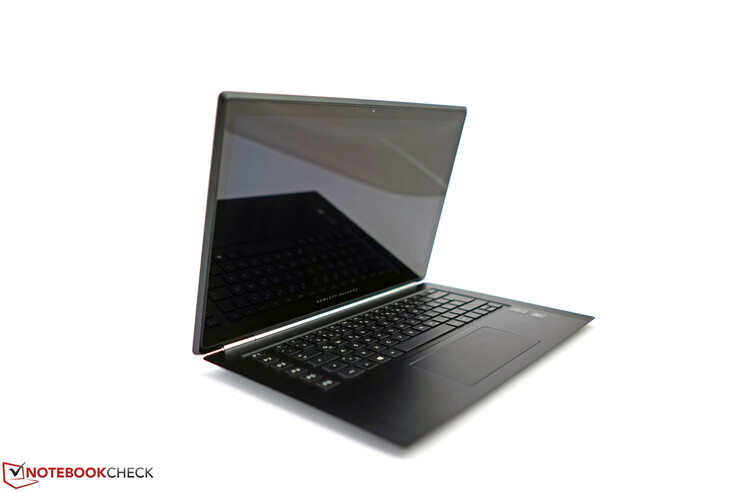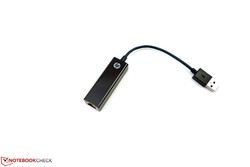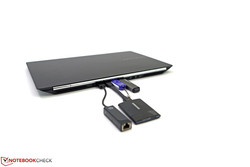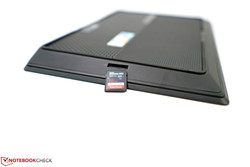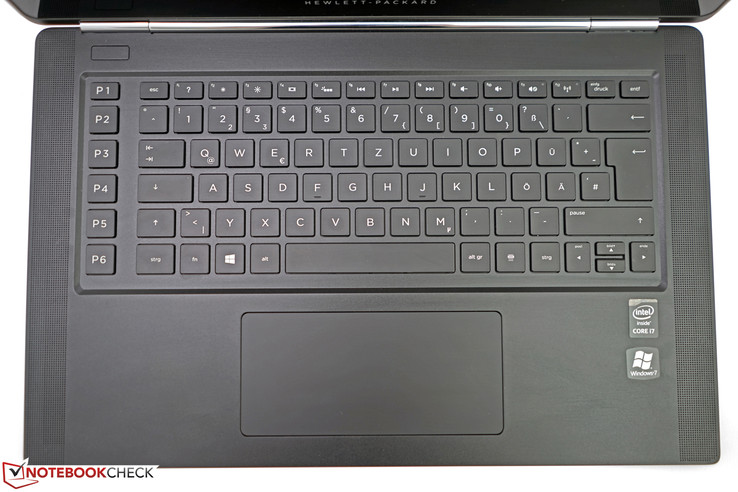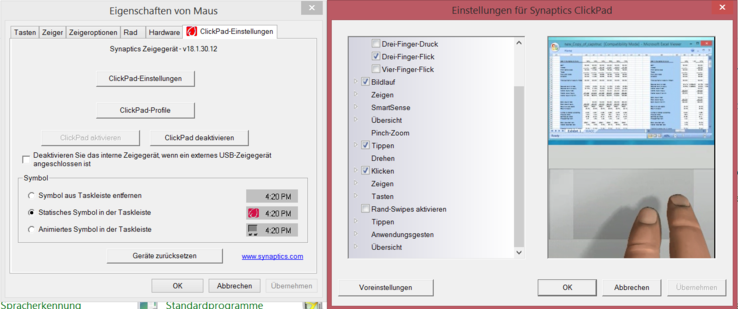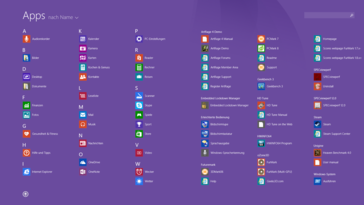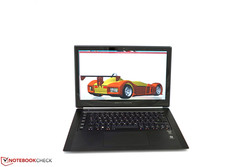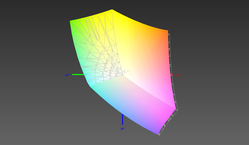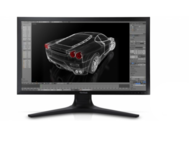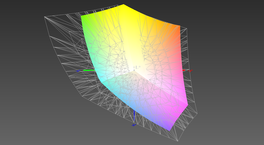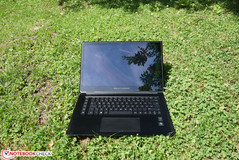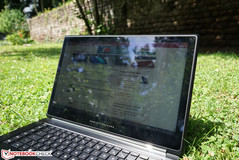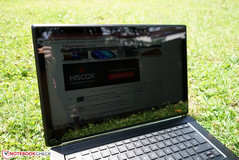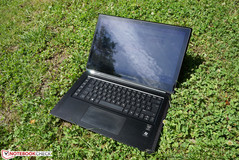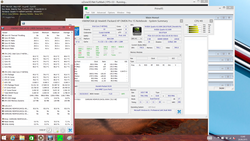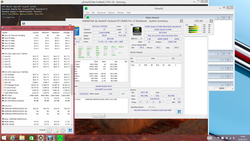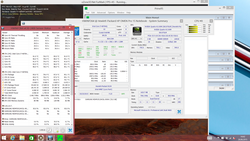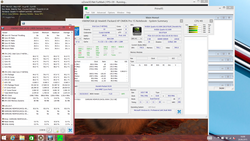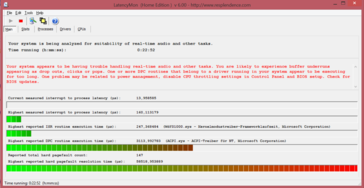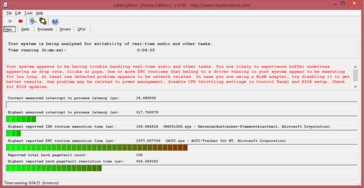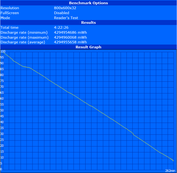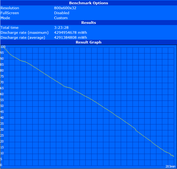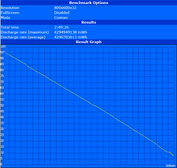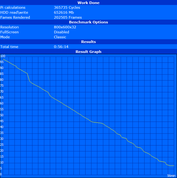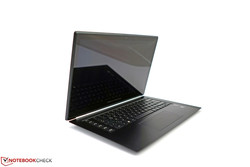HP Omen Pro 15 Workstation Review

For the original German review, see here.
HP has continuously expanded its workstation series over the last two years and created new model-series in the process. By now, you can get five different mobile workstations that are also accompanied by predecessors that are still being sold. This means HP offers the widest variety in this premium niche market. In addition to the comprehensive configuration options within the individual product series, this portfolio ensures numerous customization options.
The HP Omen Pro is the latest addition to the HP ZBook 15u and represents the current slimline trend with a premium orientation. It is closely related to the gaming notebook HP Omen, and once again, HP uses the same chassis and just modifies it with components that are designed for professional scenarios, similar to the ZBooks 14 and 15u. The main differences between the very similar models are the graphics solution, the warranty period as well as the pricing.
HP charges around 3900 Euros (~$4319) for our workstation with a professional focus. On the other hand, you get an Intel Core i7-4870HQ, a professional Nvidia Quadro K1100M GPU, an FHD touch display as well as a 512 GB M.2 SSD. You usually get Windows 7 64-bit in addition to Windows 8.1 to meet the requirements of many companies. Usually, we receive the test model directly from the manufacturer, but due to a configuration problem, there was no OS included. Even though we usually prefer Windows 7 for business devices, we installed Windows 8.1 Pro on the HP Omen Pro due to the better usability of the touch display.
Although we have already reviewed the gaming version of the HP Omen and while these impressions can be used for a purchase decision, we will still cover all the sections from a business perspective.
Case
The chassis of the HP Omen Pro weighs around 2.2 kg (~4.9 lb) and is stable, well built and uses surfaces that are convenient to touch. The base unit cannot be twisted with normal pressure, and both the palm rest as well as the keyboard are firmly integrated. The display hinge on the other hand bounces a lot and could be wobbling on a train or bus ride. The lid itself can be slightly twisted, but it is much sturdier than some rivals. There is certainly enough protection for the panel in common scenarios. We could not provoke picture distortions or changes with pressure on the back or the narrow frame. During our photo shoot session under direct sunlight the chassis became noticeably warm after only three minutes. The highly reflective glossy display surface is yet another reason for working in the shade.
Connectivity
Even though we frequently urge that some ports should be located at the back of a business device, we are not happy with the "all-or-nothing" solution of the HP Omen Pro. At least one USB port or the audio port could have been located somewhere at the front to quickly attach a stick, a hard drive or a headset. Too bad. Only the card reader is positioned on the side, but its usability is still not very convenient with the slanted chassis parts. It is tricky to find the slot with the fingers and the overall process of removing a card is rather fiddly. A docking port to attach the docking station from the ZBook-series, for example, is not available. You will also have to forego an optical drive, a modular drive bay or a replaceable battery. A positive aspect is that all the cables are at the rear so they do not clutter your workspace. Overall, the port selection with 4x USB 3.0 and DisplayPort 1.2 is decent. The missing Ethernet port is available via provided USB adaptor. The HDMI port does not support the latest standard 2.0, which means 4K output at 60 Hz is only possible via DisplayPort. USB 3.0 and the card reader are quite fast and do not act as a bottleneck; we measured transfer rates of 427 Mbps and 87 Mbps. Only fast UHS-II memory cards that can manage more than 100 Mbps are slightly slowed down by the UHS-I card reader at around 90 Mbps. We tested the performance with Samsung’s T1 SSD (256 GB), Toshiba’s Exceria Pro UHS-II (16 GB) and SanDisk’s Extreme Pro UHS-II (16 GB).
Communication
The communication features including Wireless-AC, FHD webcam and Bluetooth 4.0 pretty much cover the current standard. However, wired networks can only be used via USB adaptor with up to 100 Mbps, and an optional WWAN module to use the Internet on the road (UMTS, LTE etc.) is not available at all.
Security
As with repurposed gaming notebooks from other manufacturers, you will have to live with compromises in terms of the security features. There is no SmartCard reader, no fingerprint reader and not even a slot for a Kensington Lock. Only a Trusted Platform Module 1.2 complements the usual passwords and encryption options that are provided by the system and BIOS/UEFI.
Accessories
HP has not equipped the Omen with a proprietary docking port, so you have to use universal USB solutions if necessary. In general, the expandability is quite poor. No modular bay, no optional batteries, no optical drive and no options for storage drives. Once again, the user has to use USB solutions, which are at least not limited to one device. One example would be HP’s external DVD burner (F2B56AA, 55 Euros/~$61) that also meets the design of the Omen Pro. The cable lock listed on the homepage in the accessories section is confusing, since there is no corresponding slot on the HP Omen Pro.
Maintenance
There are no maintenance hatches on the chassis and at a first glance, there is no obvious way to open the case. It seems that HP does not want users to replace, upgrade or add certain components by themselves. Usually there is some information in the manual, but this is not the case here.
Warranty
HP offers a standard warranty period of three years, which is normal for this device category. The manufacturer also offers additional services. An upgrade to a three-year on-site service on the next business day, for instance, is available for around 130 Euros (~$144) and a combination with an accident protection for around 260 Euros (~$288).
Input Devices
Keyboard
Contrary to the current trend in the business sector, users of the HP Omen Pro have to live without a dedicated numeric keypad. The reason is obviously its similarities to the gaming version without the "Pro" in the designation. While number crunchers will certainly miss the additional keypad, other users will appreciate the central position of the touchpad. Instead, as with the gaming version of the HP Omen you get 6 programmable keys on the left side, so the regular keyboard is shifted to the right side, which requires some time to adjust. While the keys for Enter, Tab and Shift are conveniently large, the vertical arrow keys are almost tiny and very close to each other. This is not very practical for either a business device or a gaming notebook.
There is no criticism of the quality of the keyboard. The keyboard mat is firmly integrated over the whole area and does not bounce. The rather small travel provides a comfortable pressure point and a relatively quiet stroke. Prolific writers should be okay if they can live with the shifted keyboard.
The keyboard illumination creates an even brightness distribution and it is also possible to adjust the colors. It is unfortunate that the brightness can only be adjusted in the tool Omen Control. The Fn combination can only be used to turn it on or off.
Touchpad
The touchpad is unusually large and wide at 142 x 66 millimeters (~5.6 x 2.6 in). With very good gliding capabilities and response, it can be configured for multi-touch gestures. The integrated mouse buttons are smooth and work quite well. It is also possible to use the right click with a two-finger tap and therefore ignore the hardware click completely. An alternative input via TrackPoint is not available for the HP Omen.
Touchscreen
A touchscreen is a rather rare feature for a mobile workstation, but it is actually very easy to get used to especially under Windows 8.1. If you have used this input method for some time, you will quickly miss it if you use a device without a touch panel. Unfortunately, the display does not support digitizers, so you cannot use active pens. This means you either have to use your fingers or capacitive pens with a rubber tip. We noticed a very good accuracy of this input method in combination with the FHD resolution, which does not result in accidental inputs on the desktop after a short learning curve. Unfortunately, the smooth display surface is very glossy and easily attracts fingerprints. This is obviously a familiar problem, but other devices like the Apple iPad Air 2, for example, show that it does not have to be such a big issue.
Display
The HP Omen Pro is currently only available with the Full-HD touch display panel. A resolution of 1920x1080 pixels and a pixel density of 141 ppi is still a balanced ratio of the size, working area and detail presentation. Thanks to the standard resolution, there are no scaling issues or problems with tiny menus or context windows, which are still an issue for high-resolution displays. However, you also have to dispense with a very sharp picture that you will sometimes miss when you edit pictures or use graphics applications.
| |||||||||||||||||||||||||
Brightness Distribution: 89 %
Center on Battery: 314 cd/m²
Contrast: 678:1 (Black: 0.46 cd/m²)
ΔE ColorChecker Calman: 4.51 | ∀{0.5-29.43 Ø4.78}
ΔE Greyscale Calman: 6.55 | ∀{0.09-98 Ø5}
96% sRGB (Argyll 1.6.3 3D)
63% AdobeRGB 1998 (Argyll 1.6.3 3D)
69.9% AdobeRGB 1998 (Argyll 3D)
69.9% sRGB (Argyll 3D)
67.8% Display P3 (Argyll 3D)
Gamma: 2.18
CCT: 7194 K
Thanks to the Mini-DisplayPort, it is possible to drive external 4K displays natively (3840x2160 pixels) at 60 Hz. We checked this with the Viewsonic VP2780-4k, and the full review of this monitor is available in our long-term review of the HP ZBook 15 G2. The performance of the HP Omen, however, can quickly become an issue at this resolution, especially with 3D applications. More on this in the GPU Performance section. The HDMI output in 4K is generally limited to 30 Hz, because HDMI 2.0 only supports 60 Hz. Ghosting effects and a visibly delayed image composition quickly affects the picture, particularly with fast moving content.
The basic characteristics of the display are good. We can measure a maximum brightness of 312 cd/m² at the center and the average luminance of 292 cd/m² is sufficient for many situations. As it is common for Windows 8.1, it is possible to adjust the brightness in 10 steps. Instead of the manual control, you can also let the light sensor do the job, which works well. We deactivated it for our measurements to get the desired results. The minimum setting dims the display to 12.5 cd/m², which is still sufficiently bright in dark rooms and you get 147 cd/m² in step 8, which we also used for some battery tests.
At 314 cd/m², the display brightness is not reduced on battery power. This is particularly important for use in the outdoors, where you usually do not have a socket nearby. Unfortunately, the very glossy surface restricts the usability and requires more compromises compared to matte or anti-reflective panels. Another problem is that the visibility of display contents is affected by swiping and finger marks from the touch panel. They are like an additional layer on the screen.
Besides the high brightness, the black value is important for the contrast ratio. We can measure 0.46 cd/m² with the factory settings, which results in a contrast of 678:1 in combination with the maximum luminance. The black value is reduced to 0.28 cd/m² after the calibration and the display brightness is reduced to 262 cd/m2. Overall, the calibration results in a better contrast ratio of 935:1, which also leads to richer colors and a pretty deep black as well as the improved color accuracy. This will improve the picture impression significantly, especially when you watch movies, pictures or play games.
The color space coverage will also benefit the picture impression. An sRGB coverage of 96% is very good and should be sufficient for many professional users. Colors are represented comparatively differentiated and the screen can therefore create color shades that are not visible on entry-level panels. The color accuracy is also suitable for professional tasks after the calibration with a colorimeter. A maximum DeltaE 2000 of 1.61 for black, a very balanced grayscale and accurate gamma values create an almost perfect display. However, this is not the case without the calibration, where the grayscale drifts apart, the gamma values deviate heavily from the ideal values and DeltaE 2000 values above 5 are not uncommon.
The viewing angle stability is very good, which is typical of an IPS screen. You can only see brightness and color changes from extreme angles. This effect is also partly created by the smooth display surface, which reflects the light and therefore changes the subjective picture impression.
Performance
Like Apple’s updated MacBook Pro 15, HP still uses Intel’s Haswell architecture. Even though the successor Broadwell has been available for quite some time, most manufacturers have decided to rely on the old generation. There can be many reasons for this. On the one hand, it seems that Intel cannot produce enough chips, and on the other hand, it is rumored that the 6. Intel Core-i generation, Skylake will be launched in the second half of 2015. However, the configurability of the HP Omen is relatively limited anyway and cannot be compared with real workstations from the ZBook-series. We found 4 different configurations at the time of this review that differ in terms of the memory (8 or 16 GB), SSD capacity (256 or 512 GB) or processor (Intel Core i7-4720HQ or Intel Core i7-4870HQ). The prices range between 2500 and 3800 Euros (~$2770 and ~$4210). Our test model represents the most expensive version and is therefore the top model of the series.
Processor
Our review unit is equipped with an Intel Core i7-4870HQ and should meet the requirements of the customers. In addition to clock speeds of 2500 to 3700 MHz, the chip can execute up to 8 threads simultaneously depending on the application. The chip is manufactured in a 22 nm process and has a specified Thermal Design Power (TDP) of 47 watts, which requires a correspondingly powerful cooling solution inside the slim chassis. Unlike some slimline workstations with ULV processors, you do not have to worry about a performance bottleneck. According to the specs, the processor already includes Intel's GT3e GPU Iris Pro 5200 and the memory controller, which can handle up to 16 GB (only 2 slots).
The benchmark results are slightly better than the results that we have for the Intel Core i7-4870HQ so far. Cinebench R15, for example, determines 145 points (Single-Core) and 632 points (Multi-Core). However, the performance advantage over the average results of the Intel Core i7-4720HQ, which is also available for the Omen Pro, is very small. The chip only gets 7 points more in the Cinebench R15 Single-Test, and thanks to a 100 MHz higher base clock, the supposedly weaker CPU even scores 10 points more in the Multi-Test. The situation is very similar in Cinebench R11.5, where once again, we can see a small advantage in the Single-Test and a small disadvantage in the Multi-Test. Based on the virtually nonexistent performance difference you should get the version for almost 400 Euros (~$443) cheaper variant, and therefore reduce the steep price of the notebook. More performance comparisons are available in our comprehensive CPU benchmark list.
We simulate sustained load with Prime95 and FurMark, and the system is stable for around 15 minutes before a slight but constant throttling in the range of 2.4 to 2.8 GHz sets in (depending on the core temperature). This level can be maintained even after two hours and is HP’s solution to keep the heat development in control.
Only a handful of notebooks do not reduce the performance on battery power. This usually depends on how much the individual manufacturer throttles the clocks. HP interferes moderately: The processor runs at around 2500 MHz in multi-core scenarios and the Nvidia GPU at 600 MHz. This results in 506 points (Multi) and 46 fps (OpenGL Shading) in Cinebench R15, which is still a good result. Overall, this means you can expect a performance reduction of around 20%.
System Performance
The system performance benefits from the overall configuration balance that does not show any bottlenecks. Thanks to the large solid-state drive and the practical memory equipment, you do not have to upgrade these components for quite a while. Only users with very high performance requirements that are mainly using 3D applications will have to look for a workstation with a more powerful GPU. Our test model gets 4781 points in PCMark 8 Creative and 6427 points in PCMark 7.
While we checked the system for latencies, when you use external audio hardware, for example, the tool LatencyMon showed one ACPI driver that could be responsible for the occurring dropouts. A kernel mode driver is also responsible for delays of more than 3000 µs. You will have to wait for updates, but they were not available before we finished the review.
| PCMark 7 Score | 6427 points | |
| PCMark 8 Home Score Accelerated v2 | 3815 points | |
| PCMark 8 Creative Score Accelerated v2 | 4781 points | |
| PCMark 8 Work Score Accelerated v2 | 4582 points | |
Help | ||
Storage Solution
The 512 GB M.2 SSD from Samsung (XP941) alone has a retail price of around 420 Euros (~$465). It is not limited to the performance of SATA-III, but manages a sequential transfer rate of up to 715 Mbps and a writing performance of up to 605 Mbps. Thanks to the fast access times you can enjoy a very responsive system when you launch apps, files or windows. HP has not designed internal expansion options for the Omen Pro, so you should be aware of your needs before you purchase. Currently, you can only get the 512 GB versions with 16 GB memory. There is obviously always the option to use an external USB or network solutions. Comprehensive performance comparisons are available in our HDD/SSD benchmark list.
GPU Performance
The main difference compared with the gaming version of the HP Omen is the Nvidia Quadro K1100M in our review unit. It is optimized for professional applications and is comparatively fast thanks to special drivers. These GPUs are also certified for a number of applications and therefore guarantee a smooth functioning in the professional working environment. However, the Nvidia Quadro, which is still based on the Kepler architecture, is at the bottom of the ranking for professional GPUs. The Nvidia Quadro K620M that is based on the Maxwell architecture (Lenovo ThinkPad W550s) is much faster in almost every scenario, even though the internal designation suggests something else. The corresponding Maxwell upgrade for the Quadro K1100M and higher is still not available, which is why you will still find the older GPUs in mobile workstations for a while. However, it is not only the competition from Nvidia is a problem for the K1100M. AMD’s FirePro M4100/ W4170M, which is used in many inexpensive entry-level devices, is usually noticeably faster in many 3D applications and a particularly interesting option for the price-conscious users. Professional GPUs are not proper alternatives to gaming GPUs due to software differences. It does not matter how fast the Quadro GPUs may be, but they cannot keep up when the software uses optimized OpenGL instructions and requires special drivers.
| SPECviewperf 12 | |
| 1900x1060 Solidworks (sw-03) (sort by value) | |
| HP Omen Pro 15 M2T37AA-ABD | |
| Dell Precision M2800 | |
| Lenovo ThinkPad W550s 20E2-000PGE | |
| 1900x1060 Siemens NX (snx-02) (sort by value) | |
| HP Omen Pro 15 M2T37AA-ABD | |
| Dell Precision M2800 | |
| Lenovo ThinkPad W550s 20E2-000PGE | |
| 1900x1060 Showcase (showcase-01) (sort by value) | |
| HP Omen Pro 15 M2T37AA-ABD | |
| Dell Precision M2800 | |
| Lenovo ThinkPad W550s 20E2-000PGE | |
| 1900x1060 Medical (medical-01) (sort by value) | |
| HP Omen Pro 15 M2T37AA-ABD | |
| Dell Precision M2800 | |
| Lenovo ThinkPad W550s 20E2-000PGE | |
| 1900x1060 Maya (maya-04) (sort by value) | |
| HP Omen Pro 15 M2T37AA-ABD | |
| Dell Precision M2800 | |
| Lenovo ThinkPad W550s 20E2-000PGE | |
| 1900x1060 Energy (energy-01) (sort by value) | |
| HP Omen Pro 15 M2T37AA-ABD | |
| Dell Precision M2800 | |
| Lenovo ThinkPad W550s 20E2-000PGE | |
| 1900x1060 Creo (creo-01) (sort by value) | |
| HP Omen Pro 15 M2T37AA-ABD | |
| Dell Precision M2800 | |
| Lenovo ThinkPad W550s 20E2-000PGE | |
| 1900x1060 Catia (catia-04) (sort by value) | |
| HP Omen Pro 15 M2T37AA-ABD | |
| Dell Precision M2800 | |
| Lenovo ThinkPad W550s 20E2-000PGE | |
However, the Kepler architecture of the Nvidia Quadro K1100M is hardly competitive in OpenCL scenarios like Raytracing (tested with LuxMark) or when you convert files via CUDA compared to Intel’s Quick Sync. The integrated Intel Iris Pro 5200 is definitely the better choice in these situations.
| LuxMark v2.0 64Bit | |
| Room GPUs-only (sort by value) | |
| HP Omen Pro 15 M2T37AA-ABD | |
| Dell Precision M2800 | |
| Schenker S413 | |
| Lenovo ThinkPad W550s 20E2-000PGE | |
| Sala GPUs-only (sort by value) | |
| HP Omen Pro 15 M2T37AA-ABD | |
| Dell Precision M2800 | |
| Schenker S413 | |
| Lenovo ThinkPad W550s 20E2-000PGE | |
The special drivers of the Quadros have no advantage in the standard 3D range with the DirectX interface, where raw performance of the GPU is more important, which is why the comparatively slow Nvidia Quadro K1100M is clearly beaten by the inexpensive Maxwell chips. 3DMark Fire Strike determines 1352 points and the Cloud Gate test 8801 points. An Nvidia Geforce GTX 960M, which can be found in many comparatively inexpensive consumer notebooks, manages more than 4000 and 14000 points, respectively. More comparisons are available in our GPU benchmark list.
We could not determine a clock reduction of the Nvidia Quadro K1100M under sustained load. A 3DMark run immediately after the stress test even resulted in a slightly higher score compared to the cold run. Once again, HP has slightly throttled the clock of the GPU on battery power and it will only run at a core clock of 600 MHz, which is still usable.
| 3DMark 06 Standard Score | 12449 points | |
| 3DMark Ice Storm Standard Score | 73062 points | |
| 3DMark Cloud Gate Standard Score | 8801 points | |
| 3DMark Fire Strike Score | 1352 points | |
Help | ||
Gaming Performance
The HP Omen Pro was not designed for gaming and this also applies to the DirectX performance. Compared to the gaming version with an Nvidia Geforce GTX 860M, the 3DMark 2013 results show a performance disadvantage between 90 and 180% of the professional graphics card. Overall, the frame rates are usually high enough for medium details in our gaming benchmarks. The native Full-HD resolution is possible as well, but then you will have to reduce the details even further. New additions in our gaming benchmarks are “F1 2014” and “Dirt Rally”. Gaming in 4K on the external Viewsonic VP2780-4k at 3840x2160 pixels is not really possible, because the 3D performance is just too low. Other games that we tested with the Nvidia Quadro K1100M are available in our comprehensive benchmark list.
| 3DMark | |
| 1280x720 Ice Storm Standard Graphics (sort by value) | |
| HP Omen Pro 15 M2T37AA-ABD | |
| HP Omen | |
| 1280x720 Cloud Gate Standard Graphics (sort by value) | |
| HP Omen Pro 15 M2T37AA-ABD | |
| HP Omen | |
| 1920x1080 Fire Strike Graphics (sort by value) | |
| HP Omen Pro 15 M2T37AA-ABD | |
| HP Omen | |
| low | med. | high | ultra | |
|---|---|---|---|---|
| Metro: Last Light (2013) | 48 | 37 | 20 | 10 |
| F1 2014 (2014) | 119 | 101 | 55 | 35 |
| Dirt Rally (2015) | 171 | 41 | 23 | 12 |
Emissions
System Noise
Even though the fans are always running, the measured noise while idling is very restrained at 28.7 dB(A). The fans will not turn off, even when we activate the corresponding BIOS option, which is unusual for a device from HP. Medium workloads will not lead to an immediate reaction of the fans, and they will stay deactivated for a few minutes. It took 3 to 4 minutes before the cooling solution started to work harder and increased the noise to 35.7 dB(A). Maximum load will increase the fan speed to dissipate the heat from the chassis. The measured 45.9 dB(A) in this scenario might be too loud and annoying for some users. The noise characteristics are inconspicuous in every scenario and there are no high-pitched frequencies or other noises.
Noise level
| Idle |
| 28.7 / 28.7 / 28.7 dB(A) |
| Load |
| 35.7 / 45.9 dB(A) |
 | ||
30 dB silent 40 dB(A) audible 50 dB(A) loud |
||
min: | ||
Temperature
The comparatively slim chassis of the HP Omen has numerous small holes at the bottom. The cooling air will be pushed out as heat at the back by the two fans. This ensures sufficiently cooled components and also uncritical temperatures at the palm rest as well as the keyboard. We were able to measure up to 47 °C (~117 °F) at the rear after two hours sustained load.
(-) The maximum temperature on the upper side is 45.1 °C / 113 F, compared to the average of 38.2 °C / 101 F, ranging from 22.2 to 69.8 °C for the class Workstation.
(-) The bottom heats up to a maximum of 47 °C / 117 F, compared to the average of 41.1 °C / 106 F
(+) In idle usage, the average temperature for the upper side is 31.1 °C / 88 F, compared to the device average of 32 °C / 90 F.
(+) The palmrests and touchpad are reaching skin temperature as a maximum (34.2 °C / 93.6 F) and are therefore not hot.
(-) The average temperature of the palmrest area of similar devices was 27.8 °C / 82 F (-6.4 °C / -11.6 F).
Speakers
The sound system of the HP Omen Pro is really not worthy of a gaming notebook. You get a sound performance comparable to cheap business notebooks with a tinny sound that is focused on high tones, and cannot be saved by any equalizer in the world. It is not only music enthusiasts who will not be happy with the performance and you should really use external speakers or headphones. However, the combined stereo jack at the back makes it pretty hard to use wired headphones since you will need a comparatively long cable and it is hard to reach.
Energy Management
Power Consumption
The minimum power consumption of the HP Omen Pro is comparable to other workstations at 13.7 watts. While idling and with the brightness setting 1, activated Intel GPU and deactivated wireless modules, however, it cannot compete with the MSI WS60 that only consumes 8.8 watts. The value is reduced to 11.1 watts when the display is turned off, and 17.3 watts with the maximum luminance. We can measure 19.1 watts with the Nvidia GPU, activated wireless modules and the high-performance mode. Medium workloads result in 83 watts and up to 106 watts under maximum load. The power adaptor has a nominal output of 120 watts and therefore still has some headroom. It does not cause any throttling, which was the case for the gaming version that consumed up to 130 watts.
| Off / Standby | |
| Idle | |
| Load |
|
Key:
min: | |
Battery Runtime
The idle consumption values are already pretty high and the battery capacity of 58 Wh is quite small, so the HP Omen Pro cannot convince with long battery runtimes despite its mobile ambitions. The test device manages just 4:42 hours under perfect conditions in the Battery Eater Reader’s Test (minimum display brightness, Intel GPU, energy-saving mode, wireless off). This scenario is, however, not really practical, but only represents the maximum theoretical runtime. Our Wi-Fi test (Intel GPU, Balanced power profile, wireless on) with an adjusted brightness at 147 cd/m² in (8/10) determines 3:23 hours. A loop of a Full-HD video with deactivated Wi-Fi runs for 2:49 hours and the Battery Eater Classic test (maximum brightness, high-performance profile, Nvidia Quadro-GPU, wireless on) only runs for 56 minutes. This means you can forget about a whole business day without the power adaptor. Unlike HP’s own ZBook models, it is not possible to increase the battery capacity of the HP Omen Pro.
Pros
Cons
Verdict
The HP Omen is one of those workstations where the manufacturer aims to score in the demanding professional market, but with minimum effort.
An already existing notebook construction, in this case from the gaming sector, gets some modified details and is then supposed to be successful in companies, with freelancers and ambitious users. While this works in terms of the display, the system performance and the emissions, potential buyers should know that they will have to forego typical business features.
This includes the port selection, the expandability, the maintainability, the system-specific accessories and the configurability options. The CAD performance and the battery runtimes are only average.
More polarizing are the obvious gaming features, that start with the chassis design and continue to the keyboard layout as well as the lighting concept. This is basically a matter of taste, and the results will probably be very different. The ambitious retail price of 2500 Euros (~$2770; 3700 Euros/~$4100 for the review unit) is definitely pretty steep and is hardly justified by the components in a direct comparison with many rivals.
HP Omen Pro 15 M2T37AA-ABD
- 03/17/2016 v5 (old)
Tobias Winkler




